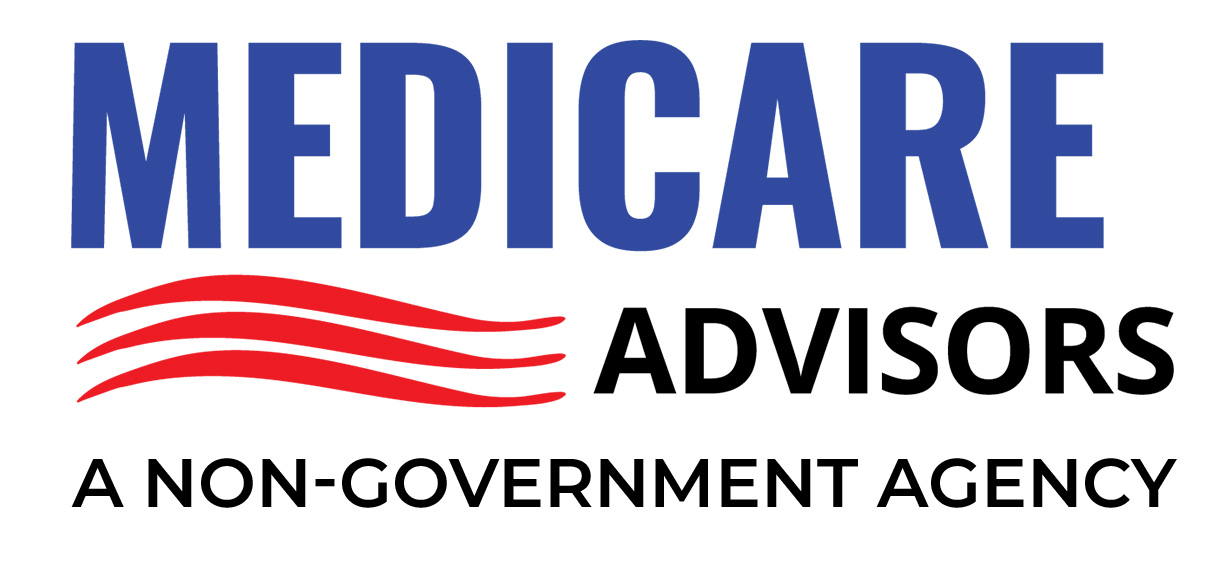Multiple options exist for receiving Medicare benefits and filling in the gaps. Beneficiaries can select between a Medicare Advantage plan or Original Medicare with a Medicare Supplement plan to meet their healthcare needs.
These supplemental plans help pay for the costs that Original Medicare doesn’t cover and may even pay for some of the beneficiary’s out-of-pocket expenses.
Top Five Medicare Supplement Plans for 2023
- Plan G
- Plan N
- Plan C
- Plan D
- Plan F
It is tempting to simply go with the finest available Medigap plan and call it a day when making this important decision. This is a solution that can never fail. Is this the greatest option for you, though? Below, we’ll explain each of the available plans in greater detail to help you pick the one that’s right for you.
In this article, we’ll go over the basics of Medigap plans, including how to enroll and what they cover outside Original Medicare.
Best Medicare Supplement Plans
Medicare’s alphabet soup of abbreviations might be daunting to newcomers. Nonetheless, it is critical to grasp their meaning. To begin, you need to know that Medigap, also known as Medicare Supplement Insurance, is denoted by the letter “Plan,” whereas Original Medicare is broken down into several sections indicated by the numeral “Parts.” Plans and their coverage are being discussed. The number of available Medigap plans is 10.
However, the vast majority of Medicare recipients choose one of the three most popular Medicare Supplement plans. The best Medicare Supplement plans are C, D, F, G, and N.
Medicare Supplement Plan G
Plan G is quite popular among Medicare recipients who became eligible for the program on or after January 1, 2020. All except one of your Medicare out-of-pocket expenses are paid for, just like with Plan F. Medicare Part B has a minor deductible that is not covered.
Once that threshold is reached, the plan provides the same coverage as Plan F. When the Medicare Part B deductible is factored in, the monthly payment is typically lower than it would be with Plan F. Like Plan F, Plan G also has an HDG high-deductible option. The HDF functionality is maintained.
Medicare Supplement Plan N
Beneficiaries who are trying to save money typically opt for Plan N. Comparable to Plan G in terms of coverage, with a few key distinctions. You’ll have to pay a tiny copay of up to $20 when you see a doctor, and $50 should you need to go to the emergency department.
Medicare Supplement Plan C
Medigap Plan C is also rather common as an alternative to Plan F. It doesn’t pay for only your Part B deductible and copayment. New Medicare recipients are not eligible for either Plan C or Plan F.
The Medicare Part B deductible and copayment are not included. Plan N is attractive to financially astute retirees because of its more affordable rates.
Medicare Supplement Plan D
When comparing Medigap Plans A through D, Plan D is analogous to Plan C, and Plan G, to Plan F. Except for the exclusion of the Part B excess charges, the coverage is identical to that of Plan G.
Medicare Supplement Plan F
When it comes to covering the costs that aren’t covered by Medicare Parts A and B, Plan F has long held the title of champion. You won’t have to worry about paying out of pocket for Medicare expenses because they are covered. In addition to Plan F, we now offer Plan HDF, which has a much higher deductible.
Beneficiaries who don’t make many doctor’s appointments may prefer this option because of the low out-of-pocket maximum. Those who are eligible for Medicare before 2020 will be the only ones able to participate in Plan F.
What are the gaps in Medicare?
Gaps in Medicare coverage are the recipient’s responsibility. The majority of these expenditures are associated with the patient’s share of the costs in Original Medicare. Cost-sharing, such as deductibles, copayments, and coinsurances, are a part of both Medicare Parts A and B. Gaps refer to the money needed to fill these voids.
Picking your Medigap policy
There are a few specifics to keep in mind when selecting the appropriate Medicare Supplement insurance. However, comparison shopping is less of a hassle because Medigap plans are standardized.
After determining the appropriate plan letter, you can then evaluate each provider’s pricing and quality offerings to determine which is best for your needs.
In the Open Enrollment Period, you can select whatever plan you want without being subject to medical underwriting. There is no underwriting required for enrollment in a Guaranteed Issue plan if you meet certain criteria.
However, let’s pretend you’re not living in either of these eras. There will then be a health qualification process before you can be covered.
Choosing a plan with a higher premium than you can reasonably pay is pointless. The cost of a Medicare Supplement plan’s premiums normally rises each year.
If you jump in at the deep end, you may soon find yourself needing to make adjustments.
The next step is to conduct an honest inventory of your current health and the health of your immediate and extended family members. A Plan N is a great choice to save money if you don’t have any health issues and rarely visit the doctor.
If you’re not in tip-top shape and/or you come from a medically complicated family, you might benefit more from Plan G’s extensive coverage.
What impacts the Medicare Supplement prices?
Your monthly premiums and future rate increases could be affected by several different variables. Your monthly premium will vary greatly depending on such factors as your location, age, and smoking status. Possible rate increases are associated with a requirement for medical underwriting. If you have preexisting problems, you may pay more for health insurance with some companies.
The most important elements in determining a rate increase are the claims experience and the financial stability of the insurance provider. Let’s investigate these two cases further. Insurance firms can get their ratings on their stability from AM Best.
The better the rating, the more secure the company’s financial position is. This is critical because it means that even if they have a bad year, they won’t have to drastically increase interest rates to compensate.
The frequency and severity of past claims are also important. More persons who are sick can enroll in Medicare because both Plan F and G are available for purchase under the Guarantee Issue circumstance.
When more people who are sick file claims, premiums rise more than they would for the plans that are available during Open Enrollment or underwritten situations.
The strategy known as “Plan N” is illustrative. Open Enrollment is the only time of year when Plan N can be purchased without a medical exam. Patients who are already ill often avoid this plan because of the little out-of-pocket expenses they’ll incur. As a result, fewer claims are filed, and rates remain stable.
FAQs
What is the highest-rated Medicare Supplement company?
AM Best ratings were mentioned up top. The Better Business Bureau has given Mutual of Omaha an A+, making it one of the best Medicare Supplement providers available. The insurance providers AARP Unitedhealthcare, Aetna, Blue Cross Blue Shield, and Cigna all have excellent A ratings.
Which Medicare Supplement plan is the most comprehensive?
Plan F is the most thorough option. It pays for the recipient’s share of the costs associated with Original Medicare. Medicare recipients who first become eligible for the program on or after January 1, 2020, have only Plan G as a complete coverage choice.
What are the top 3 Medicare plans?
More than three-quarters (around 78%) of all Medigap enrollments are concentrated in only three plans. Plans F, G, and N of the Medicare Supplement Insurance Program receive the vast majority of new policyholders each year.
What is the highest-rated Medicare Advantage Plan 2023?
Plans that provide Medicare Advantage benefits are distinct from Medicare Supplement Insurance. These plans replace your Original Medicare, so you’ll now be responsible for paying your share of the plan’s costs. Drug coverage and other benefits above what Medicare provides are typically included in these plans.
A star system ranging from 1 to 5 stars is used to rate these Medicare Part C plans. Due to regional variations, a “5-star” plan in one place may not be the same as in another. UnitedHealthcare offers more Medicare Advantage plans than any other company in the country.
What are the most popular Medicare Supplement plans?
The top three Medicare Supplement plans are the same as the ones listed above because they are the most popular. Most people who qualify for Medicare choose either Plan F, Plan G, or Plan N.
Do Medicare Supplement Plans include coverage for prescription drugs?
No. Parts A and B of Medicare are the only ones for which Medicare supplement plans will pay. Medicare Part D is a prescription drug plan that you should join.
What’s the difference between a Medigap and a Medicare Advantage plan?
Your Original Medicare coverage will always come first, followed by any Medicare Supplement coverage you have. As a result, you can visit any doctor in the United States without prior approval or referrals.
Part C of Medicare is the Medicare Advantage program. It’s possible to get your Medicare benefits through one of these programs as well. The majority of these plans take the form of HMOs or PPOs that rely on a preexisting network of providers. They typically consist of a Part D prescription plan plus other benefits that are not available with traditional Medicare.
How to Purchase a Medicare Supplement Plan for 2023
Enrolling in a healthcare plan that meets your needs is important, but doing it on your own can be a hassle. Please consult with one of our registered insurance agents who focuses on Medicare.
They are the best resource for breaking down the ins and outs of Medicare coverage and out-of-pocket costs. Then, you’ll get assistance in evaluating your needs to determine what sort of insurance policy would best serve you.
Call us right away or use our convenient online quote form. You will be linked with the most competitive local providers.





